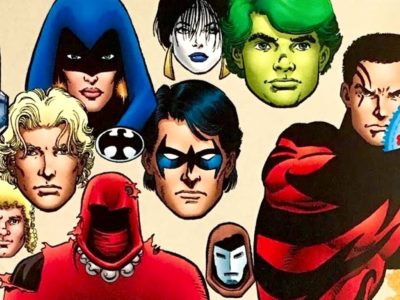
[ad_1]
Though Krakoa is supposed to be a haven for all mutantkind, some mutants still exhibit prejudice toward others, as Marrow and Feral discover.
Krakoa may be a haven for all mutants, but that doesn’t make it free of conflict or bigotry. Mutants Marrow and Feral learn this lesson in the short comic “Give A Cat A Bone…” (by Sophie Campbell, Eleonora Carlini, Triona Farrell and VC’s Ariana Maher) from the anthology comic Women of Marvel #1 published in 2021. In this story, Marrow and Feral become roommates, but quickly find that they don’t get along. However, when Marrow sees some mutants making fun of Feral’s mutation at the Green Lagoon, she defends Feral. This story shows that, despite the X-Men’s attitude of mutant pride and solidarity, there is still prejudice within the mutant community. It also shows the importance of standing up for the members of one’s community, even if they can be hard to get along with at times.
Marrow dislikes Feral almost immediately, since she moves into her living space unannounced and invades Marrow’s personal space by touching the bones that grow out of her. She goads Feral into fighting her, and this fight leaves them both with cuts and bruises. However, at the Green Lagoon, Shark-Girl informs her that Feral used to be a Morlock just like Marrow. This causes Marrow to reassess her opinion of Feral.
The Morlock community that Marrow grew up in is extremely important to her. Before mutants came to live in Krakoa, the Morlocks were a group of mutants that lived in the sewers. They were shunned by humanity because they had “ugly” mutations, such as the bones growing out of Marrow’s skin. The Morlocks rejected Professor X’s dream of mutants and humans living together in peace, because they had experienced the severe disdain and cruelty that humans had toward mutants, particularly mutants who couldn’t easily hide their mutations and pass themselves off as human. Thus, they believed that humans could never learn to accept mutants.
The Morlocks were proud of their “ugly” mutations, even though humans hated them and even other mutants sometimes distrusted them based on their powers. The Morlocks also recognized the importance of sticking together and helping each other, since they were exiled from the rest of society. They had to rely on each other for support, because nobody else was going to help them. Both of these attitudes continue to be very influential for Marrow, who was raised a proud Morlock.
When Marrow discovers that Feral also used to be a Morlock, she realizes that the two of them share something important in common. She also realizes that Feral’s mutation, which gives her a catlike appearance with orange fur and a tail, makes her a target for prejudice. Though the X-Men believe that all mutant powers should be celebrated, there are still some mutants on Krakoa who cling to human standards of beauty and believe that mutants with “ugly” mutations are worthy of mockery.
When Marrow sees two mutants with “invisible” mutations making fun of Feral’s appearance, she decides to step in, yelling at the other mutants to leave Feral alone. Feral is surprised by Marrow’s actions, because they had gotten into a fight earlier. Marrow’s newfound compassion is motivated by her Morlock upbringing. She feels a duty to stand up for someone who was also a fellow Morlock and went through many of the same experiences as her. She also recognizes that mutants with “ugly” mutations need to stick together, because even other mutants will act cruelly to them. Though the creation of Krakoa as a mutant society has improved things, that prejudice still exists, as this altercation proves.
Marrow and Feral have very different personalities, and still might not get along. Marrow is more serious and guarded, while Feral is more outgoing and friendly. But despite their differences, they still have each other’s back. Even within mutant society, they are both outsiders, so they have to rely on each other for help. Their experience living with the Morlocks taught them the importance of sticking together.
About The Author
[ad_2]






